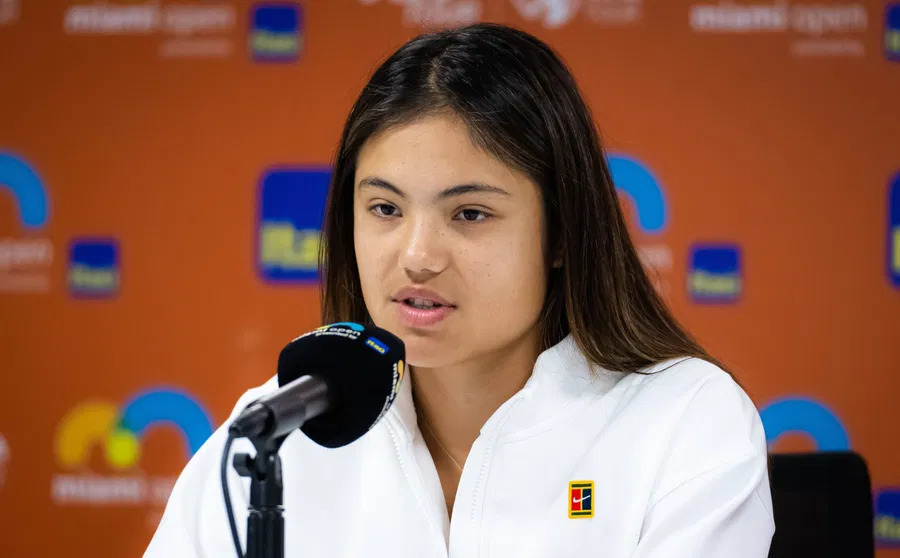
Emma Raducanu’s journey back to competitive tennis has been fraught with challenges as she struggles to regain her form following a series of injuries. The British tennis star, who captivated the world with her unexpected win at the 2021 US Open, is now facing a steep road to recovery, with a lingering foot injury that has significantly set back her progress. Her most recent setback occurred during the Korea Open, where she was forced to withdraw from the quarterfinals due to aggravated pain in her foot. Now, with doubts surrounding her return to peak performance, Raducanu has had to confront the harsh reality of missteps taken in her recovery process.
The year 2024 has proven to be an unexpected rollercoaster for Raducanu, filled with moments of promise and subsequent challenges. Earlier in the year, she showed flashes of her talent in tournaments at Nottingham and Eastbourne, and even reached the Round of 16 at Wimbledon. However, since that inspiring performance, the journey has been anything but smooth for Raducanu. Reflecting on her setbacks, she recently admitted that attempting a return to the court too early might have been a costly mistake. During a recent interview with her sponsor, HSBC, Raducanu shared her perspective on the lengthy and taxing recovery process.
“In 2023, I underwent three surgeries and was out of the circuit for eight months. Moreover, the recovery was not as fast as we had hoped,” Raducanu shared, adding that her initial goal was to return within four months post-surgery. However, due to premature attempts to train and compete, she has found herself in an extended recovery phase. “I ended up needing double the time because I returned to the courts too soon and caused further damage,” she confessed. This experience, while difficult, has been a valuable lesson for Raducanu, teaching her the importance of patience and allowing her body the necessary time to fully heal.
Raducanu acknowledged that in her rush to return, she had sidelined her recovery in favor of training and competition—a decision she now views as a critical error. This setback has led her to adopt a renewed focus on self-care and gradual rehabilitation, prioritizing her physical well-being above all else. “I think that taught me a lesson, a lesson about patience and not trying to rush processes,” she reflected. Raducanu’s renewed perspective now emphasizes a healthy balance between ambition and self-care, which she hopes will be the key to a more sustainable and successful career.
As Raducanu approaches her comeback with newfound patience, she has also gained a deeper appreciation for her health and overall well-being. She’s learned to value her body’s resilience and the demands of professional tennis. “When you come back to the circuit, you need time to reach the level that this sport demands. Matches are different from trainings, they introduce an element of unpredictability, so right now I am much more grateful for my health than my results,” she explained. This shift in mindset reflects Raducanu’s maturity as she navigates the unique pressures of professional sports.
Despite her setbacks, Raducanu has shown remarkable resilience. Beginning the season with a low ranking of 301, she has fought her way back to approach the top 50, demonstrating her talent and determination to succeed despite numerous interruptions. Her gradual improvement has inspired many fans and even garnered the encouragement of former WTA players who have followed her career with interest.
One such supporter is former British tennis star Laura Robson, who has observed Raducanu’s journey with an empathetic eye. Robson, who faced her own injury struggles during her career, recently offered Raducanu advice on finding her footing in the sport. Robson noted the importance of Raducanu establishing what works best for her, both in terms of training and competition schedule, given her history of injuries. “It’s still such a learning experience and the fact that she’s still figuring out what works for her, figuring out where she wants to play, and how many tournaments,” Robson shared, acknowledging that the process of trial and error is natural for young players like Raducanu.
Robson also praised Raducanu’s recent development of a more aggressive playing style, a shift that reflects her growth and ambition on the court. “She’s a great player with such an attacking game style,” Robson observed, noting that while Raducanu has the potential to beat almost anyone, she needs consistency. “You just need to be able to do that day in, day out.” Robson’s insights underscore the learning curve that Raducanu is currently navigating, with the promise of greater success as she continues to refine her approach.
Looking ahead, Raducanu is focused on making a thoughtful and well-paced return to the tour. Her recent experiences have taught her to listen to her body, take breaks when needed, and approach each match with a refreshed perspective on health. This year has become an invaluable lesson in resilience and adaptability, teaching her to manage expectations and build a foundation for long-term success. Rather than simply rushing back to the court, Raducanu is now committed to a sustainable recovery and return, one that prioritizes her physical and mental well-being.
While Raducanu’s comeback may not have been as swift as she initially hoped, her journey illustrates the realities faced by many professional athletes who must balance ambition with self-care. With her renewed commitment to patience and her clear dedication to returning stronger than ever, Raducanu’s fans can look forward to seeing her perform at her best in the seasons to come. The challenges she has encountered are not only shaping her as a player but also as a resilient figure in the sport, and her return will undoubtedly be one of the most anticipated comebacks in women’s tennis.
Leave a Reply